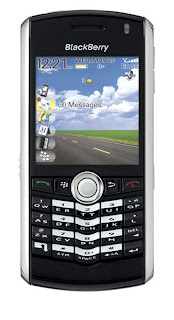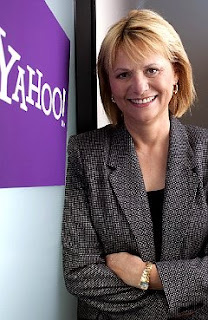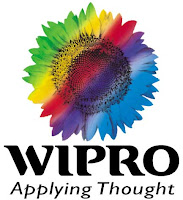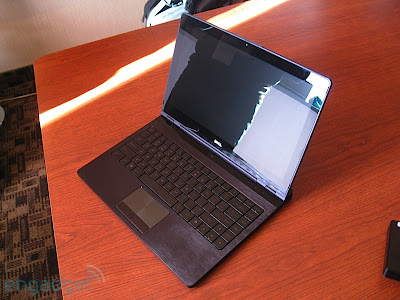Sony Electronics seems to be one of the busiest companies at the Consumer Electronics Show in Las Vegas. The company has announced 15 new products in the camcorder category. The big additions in the new line of products include easy-to-use, pocketable camcorder which is YouTube-friendly.
Among the new home-video offerings are the company's first forays into flash-memory camcorders, with five new models that incorporate solid-state drives. Four of the five camcorders capture standard-definition only.
The other top tier products are the high-definition, hard-drive-based XR series, which will replace the AVCHD (Advanced Video Codec High Definition) Handycam SR10, Handycam SR11 and Handycam SR12 models. The SR line will live on, however, with three new standard-definition units.
The $200, MHS-CM1 Webbie HD has a miniature, camcorder-like shape and offers a 5X optical zoom, 5-megapixel stills, a MemoryStick slot, a 2.5-inch LCD screen, and Sony's Picture Motion Browser software embedded in the camcorder for clip management and easy uploads.
The $170, slightly more compact MHS-PM1 Webbie HD is "about the size of a BlackBerry. It offers a swiveling lens, captures 5-megapixel stills, and has Picture Motion Browser and a MemoryStick slot.
Both Webbie HD camcorders record high-definition MPEG-4 (H.264) video, and are available in silver, orange, and the goes-with-anything eggplant.
At $ 1500, Sony Handycam HDR-XR520V, packs a whopping 240GB hard drive, which the company says translates to 92 hours of footage captured at the lowest setting (7 mbps). The XR520V, as well as the other new camcorders in the XR series, maxes out at a 16-mbps bit rate for HD footage. The XR520V also has Sony's new back-illuminated Exmor-R CMOS sensor, which offers better low-light footage, as well as a built-in GPS receiver that geotags photos and video and automatically updates the camcorder's clock based on the time zone. The XR520V captures 1920-by-1080 high-definition video and 12-megapixel stills.
The Handycam HDR-XR500V (priced at $1300) has the same specs as the XR520V but holds a 120GB hard drive that stores 46 hours of footage at the lowest bit rate. The XR500V and the XR520V are Sony's first consumer camcorders to use the six-blade-aperture G Lens found on the company's professional HDR-FX1000 camcorder, which reduces light refraction and captures background lights with more clarity.
The new hard-drive-based XR series are two other models. The HDR-XR200V (priced $1000) is a 120GB camcorder that has a 15X optical Carl Zeiss zoom lens, captures 1920-by-1080 HD video, shoots 4-megapixel stills, sports built-in GPS, and offers Smile Shutter and face detection.
The HDR-XR100 (priced at $750) provides an 80GB hard drive, a 10X optical Carl Zeiss zoom lens, 1920-by-1080 HD video, 4-megapixel stills, and Smile Shutter and face detection, but no built-in GPS.
All of the new XR camcorders also offer Sony's Optical Steady Shot stabilization, which the company says has a much wider ranger of lens shift to compensate for shaky hands. According to Sony, the new Optical Steady Shot system has ten times more correction angle than its current Handycams do.
The only flash-based high definition camcorder is the 8GB Sony Handycam HDR-CX100, which captures more than 3 hours of 1920-by-1080 HD video, shoots 4-megapixel stills, and offers ‘point and shoot camera’ style features such as Smile Shutter and face recognition. The CX100, also has a 10X optical Carl Zeiss zoom lens.
On the standard-definition horizon are the Sony Handycam DCR-SX60 (16GB flash drive, $400), DCR-SX41 (8GB flash drive, $330), and DCR-SX40 (4GB flash drive, $300), all of which have an impressive 60X optical Carl Zeiss zoom lens.
In addition, there are three new SX-series cameras which offer expandable storage by way of a Memory Stick slot, as well as a 2.7-inch touch-screen LCD.
The DCR-SX60 holds up to 10 hours of standard-definition video in LP mode, the DCR-SX41 holds up to 5 hours, and the DCR-SX40 holds up to 2.5 hours. However, while the DCR-SX60 offers Super SteadyShot optical image stabilization, the DCR-SX41 and DCR-SX40 do not--something to think about, given the whopping 60X optical-zoom range.
Also in the arsenal of Sony is a flash-storage camcorder, Handycam DCR-DVD850 (priced at $430), a standard-definition "hybrid" camcorder that records to three different storage media: mini-DVD, Memory Stick, and a 16GB flash drive, which stores about 10 hours of video in LP mode. The DCR-DVD850 also features a 60X optical Carl Zeiss zoom lens, plus Super SteadyShot optical stabilization and a 2.7-inch-diagonal touch-screen LCD.













